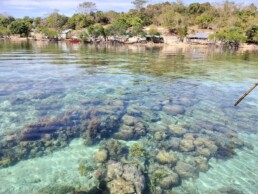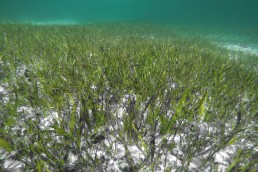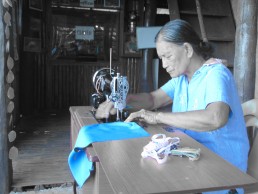Darwin Initiative
Darwin Initiative


Replicating a successful model to develop a network of Indigenous Marine Managed Areas
The Calamian Islands in the Philippines are home to numerous endangered marine species and the last remaining members of the Tagbanua tribe. This area is a center for both marine and biocultural diversity. This project funded by the UK Biodiversity Challenge Fund's Darwin Initiative aims to establish six Indigenous-Marine-Managed-Areas (IMMAs) in the Calamianes to protect these resources.
The project aims to conduct research into traditional knowledge and beliefs of the Tagbanua tribe, and how this influences their management of coastal resources. The project uses social and behavioral science research approaches to determine a pathway between traditional and scientific ecological knowledge, which can benefit the marine environment and local communities. This approach will be applied to each of the six IMMAs, and policy recommendations will be compiled for inclusion in each IMMA management plan.
Communities will receive training in marine ecology and cultural heritage for sustainable development, including threats and consequences of destructive activities and alternative livelihoods. The project will focus on fisherfolk, with an equal emphasis on men and women to enable behavior change. Local Government Units and Barangay councils will be trained to co-develop marine resource management plans and create the necessary legislation and enforcement activities. The project will use social marketing techniques, such as the book ‘Diwa the Dugong’, to train fisherfolk to assist in monitoring the IMMA, reporting infractions and recording evidence on their mobile phones. The project will also facilitate exchanges between the proposed IMMAs and existing sites at Caluauit and others to create a strong network and allow experiences and successes to be shared.
The project will establish a center for Tagbanua handicraft in Coron and develop online marketing. Local women will receive training in quality control, ensuring that they can earn the maximum possible income from their handicrafts. This will improve local wellbeing and empowerment, community resilience, and reduce dependence on fisheries for income, providing a safety net for the poorest families when fishing is not possible.
Marine Protected Areas (MPAs) are widely used for biodiversity conservation, increased fisheries productivity, and protection of cultural diversity. However, the establishment of MPAs can affect local communities, particularly those who rely heavily on marine ecosystems. This is especially important in areas where conservation areas coincide with indigenous territories. In fact, 80 % of the world's biodiversity areas overlap with ancestral lands and waters of indigenous communities.
In the Philippines, the island of Palawan is home to several marine protected areas and ancestral domains, including the Calamian group of islands. These islands have diverse and rich ecosystems, including coral reefs, seagrass and mangrove forests, serving as habitats for endangered marine species such as sea turtles, dugongs, and marine crocodiles. However, some conservation initiatives inadequately consider the area’s considerable biocultural heritage personified by the Tagbanua tribe. This creates an obstacle to effective implementation and integration of potential conservation measures. The proposed project aims to address this problem by working alongside other initiatives and filling the biocultural gap, contributing to the wider needs of the Calamianes.The project has been designed to contribute directly to the following targets in the Philippines’ National Biodiversity Strategy and Action Plan (NBSAP):
Target 3: By 2028, there will be no net loss in the presence and area distribution of live coral cover, mangroves, and seagrasses.
Target 8: By 2028, fish stocks of economically important species will be maintained.
Target 9: By 2028, there will be an annual increase of at least 5% in biodiversity conservation-related jobs such as ecotourism, sustainable agriculture, and ecosystem restoration.
Target 12: By 2028, capacity for biodiversity conservation of public and private sector groups in terrestrial and marine protected areas (PAs) and KBAs will be strengthened.
Target 20: By 2028, there will be a 20% increase from 2015 levels in the coverage of established marine protected areas (MPAs)/sanctuaries across various aquatic habitats.
The project’s focus on the marine environment directly supports Goal 14 (Life Below Water) of the Sustainable Development Goals (SDGs). This is achieved through efforts to address threats such as overfishing, habitat degradation, and loss of blue carbon sinks.
Furthermore, the project indirectly supports Goal 1 (No Poverty) by diversifying livelihoods in communities that are currently highly dependent on a single unsustainable livelihood, which is fishing. By creating alternative income-generating activities that are sustainable, the project aims to reduce poverty and improve the economic well-being of the communities in the Calamianes.
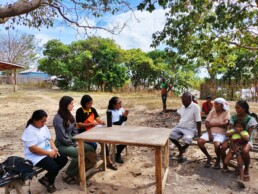
Related Case Studies
Contact C3 Philippines
Busuanga OfficeSalvacion, Busuanga, Palawan, 5317 Philippines
Taytay Field OfficePurok 6 San Lorenzo, PoblacionTaytay, Palawan, 5312 Philippines
C3 Philippines (C3PHILIPPINES INC.), in accordance with the Corporation Code of the Philippines, is registered as a non-profit organization in the Philippines under the Securities and Exchange Commission with Company Registration No. CN201115227.
Fisheries Management
Fisheries Management
Community-driven and ecosystem-based solutions
Women-led conservation and food security.
C3’s exciting partnership with Fish Right has created gains in ecosystem-based and community-driven fisheries management in the Philippines. In 2020, established Marine Protected Areas in Busuanga increased by two, with four more newly proposed. Two more Women-Managed Areas were also proposed. The new and proposed MPAs now comprises a total area of 1,402.1 ha in Barangay Quezon; Calawit Island, Barangay Buluang; Barangay New Busuanga; and Barangay Buluang.
Equal participation is essential to successfully increasing regional fish populations, improving local climate resilience, and supporting community livelihoods. Women and marginalized groups have been encouraged and empowered by C3 to actively manage natural resources. 374 ha are currently run by fifty indigenous women as Women-Managed Areas in two locations: Calawit Island, Barangay Buluang, and So. Ocam-ocam, Barangay New Busuanga. Calawit is especially meaningful as the women’s management was formalized through an Official Resolution granted by the Tagbanwa elders and executive committee, signifying a break with tradition in the male-led Tagbanwa culture.
We work with the following agencies and organizations:
C3 involves all stakeholders.
Our collaboration with local government has yielded three Barangay and Municipal Resolutions for the protection of marine areas. This is supported in the community by the enrichment activities of one hundred newly-trained Peer Educators and over a hundred new Youth Ecowarrior volunteers.
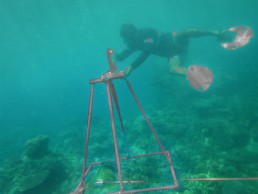
Related Case Studies
Contact C3 Philippines
Busuanga OfficeSalvacion, Busuanga, Palawan, 5317 Philippines
Taytay Field OfficePurok 6 San Lorenzo, PoblacionTaytay, Palawan, 5312 Philippines
C3 Philippines (C3PHILIPPINES INC.), in accordance with the Corporation Code of the Philippines, is registered as a non-profit organization in the Philippines under the Securities and Exchange Commission with Company Registration No. CN201115227.
Marine Protected Areas
Marine Protected Areas
Sustainable Marine Protected Area Management
A holistic stewardship model.
Globally, so many MPAs are merely ‘paper parks’. No positive impacts are being delivered on the ground in terms of fisheries management, habitat replenishment and conservation, and community engagement in monitoring and management. Consequently, we took a different route in working with Marine Protected Areas in the Philippines.
C3’s environmental stewardship model focuses on assessing the current functioning of MPAs in a holistic manner (traditional knowledge, governance, socio-economic and biodiversity assessments, financial sustainability) and then developing community capacity for governance and implementation of management plans.
Delivery of key community services including diversified income generation and improvements in health and education services is key to ensuring MPAs benefit local populations. Sustained, intensive outreach in the communities about fisheries regulations, climate change, species and habitats is a key focal area because only by fully understanding the purpose and objectives of MPAs can the community be fully motivated and mobilised to sustain them.
C3 already works in two MPAs in the Calamianes islands: Sagrada-Bogtong and Concepcion. It is currently in the process of developing further 9 MPAs.
The Calamianes are home to numerous red-listed marine species, as well as the last remaining members of the Tagbanua tribe. Thus, they are not just a centre of biodiversity, but a centre of biocultural diversity.
C3 has achieved success in leading the establishment of a 191 ha Indigenous Marine Managed Area (IMMA) at Calauit Island, Busuanga; and in the development of several other IMMAs in the Calamianes. Uniquely, the IMMA network will aim to capitalize on existing traditional management of the Tagbanua peoples, integrating these beliefs and cultural behaviours into management plans.
On the main island of Palawan, C3 has been working with stakeholders since 2017. We are improving the functioning of El Nido-Taytay Managed Resource Protected Area, of which 36,018 hectares is terrestrial, and 54,303 hectares is marine. The same threats are present: land conversion for tourism and agriculture, and illegal logging of hardwoods and mangroves.
C3 is also active in northwestern Palawan, in the incredible Malampaya Sound and Seascape Protected Area. This covers about 200,000 hectares of terrestrial and marine areas alike. This region is of critical ecological and economic importance, as it is both a watershed and a rich fishing ground–dubbed the ”Fishbowl of the Philippines.” It is made up of various habitats and ecosystems such as tropical lowland forest, old growth mangroves, coral reefs, sea grass beds, and coastal beaches. The area abounds with flora and fauna, including species endemic to Palawan.
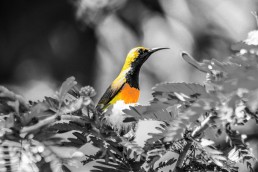
Related Case Studies
Contact C3 Philippines
Busuanga OfficeSalvacion, Busuanga, Palawan, 5317 Philippines
Taytay Field OfficePurok 6 San Lorenzo, PoblacionTaytay, Palawan, 5312 Philippines
C3 Philippines (C3PHILIPPINES INC.), in accordance with the Corporation Code of the Philippines, is registered as a non-profit organization in the Philippines under the Securities and Exchange Commission with Company Registration No. CN201115227.
Rural Entrepreneurs
Rural Entrepreneurs
Promoting Local Livelihoods
Tailor-made training for communities.
In order to conserve coastal resources for the long term, the buy-in and motivation of local people is fundamental. C3’s focus on rural entrepreneurs addresses this challenge.
C3 has conducted business feasibility studies in conjunction with household surveys and focus group interviews to determine the best livelihoods for specific communities. Livelihoods take time to develop, especially in rural communities with a local level of education and financial literacy.
C3 focuses heavily on the engagement and training of women, unemployed youth, and minority groups such as the LGBT community to provide employment opportunities in the growing tourism sector.
Small restaurants, guided tours, and handicraft production are all successful businesses in Palawan today, thanks to C3’s support.
In most of our partner communities, people are limited to fishing and farming, and often it is for subsistence purposes. Diversification of household income increases communities’ resilience to the impacts of climate change on dwindling fisheries. It also helps them provide for their families in times of environmental and economic shocks. To overcome the well-known fact that most small businesses fail in the first two years, C3’s approach focuses on year-on-year technical and financial support, refresher training, monitoring, and advising for people starting new livelihoods.
C3’s role in the establishment of an Indigenous Marine Managed Area (IMMA) at Calauit Island, Busuanga, and of several other IMMAs in the Calamianes, ensures the community is aided in their livelihoods. Our next steps are to work closely with local government to develop legislation and management plans; and with local fishers to establish citizen monitoring programmes. Income from the sale of traditional indigenous crafts will be augmented through the creation of a marketing programme.
Already, members of the Busuanga Women for Dugong Association make an additional Php600 to Php1,200 selling homemade dugong keyrings and toys to visiting tourists. Fishers who work as Dugong Monitors take home an additional monthly income of Php900 to Php1,800.
In partnership with Seacology, C3 has established three community-based incentive mechanism for forest protection and education structures: a Mangrove Boardwalk, Information Center, and Floating Watch Tower. We have also established two conservation enterprise livelihoods: community savings face mask-making, and fresh and processed cachipay (windowpane oysters).
C3 will be extending its successful portfolio of sustainable livelihoods to the main island of Palawan in coming years.
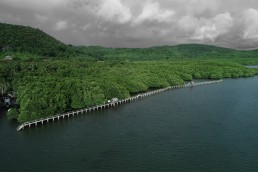
Related Case Studies
Contact C3 Philippines
Busuanga OfficeSalvacion, Busuanga, Palawan, 5317 Philippines
Taytay Field OfficePurok 6 San Lorenzo, PoblacionTaytay, Palawan, 5312 Philippines
C3 Philippines (C3PHILIPPINES INC.), in accordance with the Corporation Code of the Philippines, is registered as a non-profit organization in the Philippines under the Securities and Exchange Commission with Company Registration No. CN201115227.
Blue Carbon
Blue Carbon
Seagrass and Mangrove Research and Conservation
The importance of mangroves and seagrass ecosystems.
In the past, conservation efforts placed heavy emphasis on coral reef ecosystems. It is only recently that the fundamental significance of mangrove forests, tidal wetlands, and seagrass beds has been recognized as blue carbon sinks. Science has discovered that these underappreciated ecosystems can store more carbon for a longer period (up to thousands of years), and at a far quicker rate than terrestrial forests.
C3 has long been involved in seagrass and mangrove research and conservation. We regularly contribute to national and global knowledge about these critical systems. A large part of the organisation’s work involves mapping these ecosystems, documenting threats, and establishing community monitoring programmes as well as campaigning for their inclusion in new and existing MPAs.
Our baseline assessment revealed that our area coverage is rich in 31 mangrove species and 24 beach forest species.
In the areas we work, these ecosystems are critical.
Mangrove and seagrasses sustain coastal livelihoods, and provide nursery grounds, feeding areas, and shelter for hundreds of fish and invertebrate species. They also provide physical protection for vulnerable coastal communities from increasingly frequent and severe typhoons that result from the escalating impact of climate change.
To support mangrove and seagrass growth, fifteen mangrove and beach forest community nurseries were established in Coron and Busuanga. In these nurseries, nine mangrove species and four beach forest tree species were raised. This has successfully resulted in the planting of over 52,000 mangrove seedlings and 10,300 beach forest tree seedlings.
To further protect these ecosystems, eight community members were deputized as Coastal Forest Guards. C3 also developed IEC materials, consisting of a poster and brochure, to inform the community on coastal forest protection.
View our documentation
of the Busuanga Coastal Forest
Project Implementation here.
Another of C3’s achievements is the development of the Mangrove Forest Management Plan of Busuanga Island.
By the end of 2020, eight coastal Barangays of Busuanga and Coron have benefited from our Busuanga Coastal Forest Project. We reached over 2,000 people through our community education and public awareness program, and a total of 1,652.2 ha of Busuanga Coastal Forest have been rehabilitated and protected.
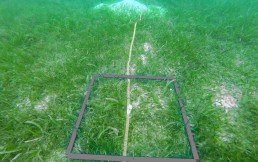
Related Case Studies
Contact C3 Philippines
Busuanga OfficeSalvacion, Busuanga, Palawan, 5317 Philippines
Taytay Field OfficePurok 6 San Lorenzo, PoblacionTaytay, Palawan, 5312 Philippines
C3 Philippines (C3PHILIPPINES INC.), in accordance with the Corporation Code of the Philippines, is registered as a non-profit organization in the Philippines under the Securities and Exchange Commission with Company Registration No. CN201115227.
Endangered Species
Endangered Marine Species
Dugong Conservation
The country’s first Dugong and Sea Turtle Protected Area.
The iconic yet elusive dugong can be observed regularly around certain bays of Palawan. Unfortunately, it is still very much under threat, having been exterminated from many areas of the archipelago by deliberate hunting, accidental bycatch, and destruction of its feeding grounds and seagrass beds.
Like dugongs, green sea turtles and Hawksbill sea turtles are charismatic and highly threatened species in these zones. They have been highly exploited in the past, with poaching of adults and eggs across the islands.
Palawan is already known for several notable MPAs: the Northeastern Palawan Marine Protected Area Network, which includes, among others, the pristine waters of El Nido, Roxas, and Taytay; the popular snorkeling destination of Siete Pecados in Coron; and Cagayancillo, home to the Tubbataha Reefs Natural Park, the largest MPA in the country. It is in Palawan that C3’s achievement is situated: the country’s first Dugong and Sea Turtle Protected Area.
This sustainable, community-run dugong conservation programme in the Calamianes islands promotes protection measures that focus on long-term seagrass and nesting beach monitoring. C3’s recent expansion to Northern Palawan and the launch of its Taytay office extends the area of monitoring and protection of these species.
To monitor small and threatened dugong populations, C3 Philippines pioneers the use of drone technology along with Murdoch University and National Geographic. The surveys also include sea turtle and marine mammal counts. Data generated fine-tunes and feeds into the innovative Dugong Detector system, which was awarded a Google Challenge Prize in 2018. The technology’s low cost makes it suitable and accessible for scientific endeavors in developing countries.
C3 also acts as an advisory body to the Indigenous Tagbanwa tribes of Calawit island.
In 2017, an informal dugong-watching programme sprung up in Calawit, focusing on a particularly bold dugong named Aban. C3 developed dugong-watching guidelines based on protocols used in Australia and Vanuatu, and trained a corps of community members as Bantay Dugong (Dugong Monitors). However, this industry must not have adverse effects on the dugong or its fragile habitat; thus, in 2018, following a five-month research study, a set of recommendations was submitted to the Indigenous council regarding limits on visitor numbers and an equitable sharing of benefits between tour operators and local communities.
C3 is also conducting a study on indigenous traditional knowledge surrounding sea turtles and implications for their conservation, again funded by National Geographic.
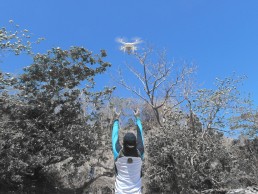
Related Case Studies
Contact C3 Philippines
Busuanga OfficeSalvacion, Busuanga, Palawan, 5317 Philippines
Taytay Field OfficePurok 6 San Lorenzo, PoblacionTaytay, Palawan, 5312 Philippines
C3 Philippines (C3PHILIPPINES INC.), in accordance with the Corporation Code of the Philippines, is registered as a non-profit organization in the Philippines under the Securities and Exchange Commission with Company Registration No. CN201115227.

